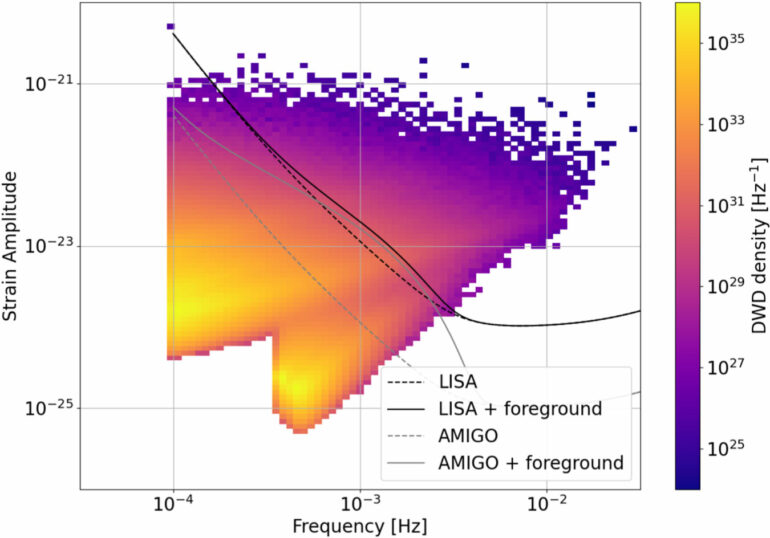Astronomers using simulated data have produced a glimpse of the sky as it would appear in gravitational waves, cosmic ripples in space-time generated by orbiting objects. The image shows how space-based gravitational wave observatories expected to launch in the next decade will enhance our understanding of our galactic home.
Since 2015, ground-based observatories have detected about a hundred events representing the mergers of systems that pair stellar-mass black holes, neutron stars, or both. The signals typically last less than a minute, have relatively high frequencies, can appear anywhere in the sky, and their sources lie far beyond our galaxy.
“Binary systems also fill the Milky Way, and we expect many of them to contain compact objects like white dwarfs, neutron stars, and black holes in tight orbits,” said Cecilia Chirenti, a researcher at the University of Maryland, College Park, and NASA’s Goddard Space Flight Center in Greenbelt, Maryland. “But we need a space observatory to ‘hear’ them because their gravitational waves hum at frequencies too low for ground-based detectors.”
Astronomers call these systems UCBs (ultracompact binaries), and they expect that future observatories like LISA (Laser Interferometer Space Antenna), which is led by ESA (European Space Agency) in collaboration with NASA, will detect tens of thousands of them. UCBs are typically difficult to spot—they are usually faint in visible light, and astronomers currently know of only a handful with orbital periods shorter than an hour. Discovering many new UCBs is one of LISA’s main objectives.
Using data simulating the expected distribution and gravitational wave signals of these systems, the team developed a way to combine the data into an all-sky view of the galaxy’s UCBs. A paper published in The Astronomical Journal describes the technique.
“Our image is directly analogous to an all-sky view of the sky in a particular type of light, such as visible, infrared, or X-rays,” said Goddard astrophysicist Ira Thorpe. “The promise of gravitational waves is that we can observe the universe in a totally different way, and this image really brings that home. I hope one day I can see a version made with real LISA data on a poster or T-shirt.”
More information:
Kaitlyn Szekerczes et al, Imaging the Milky Way with Millihertz Gravitational Waves, The Astronomical Journal (2023). DOI: 10.3847/1538-3881/acd3f1
Provided by
NASA’s Goddard Space Flight Center
Citation:
NASA team simulates a glimpse of our galaxy in gravitational waves (2023, September 20)
